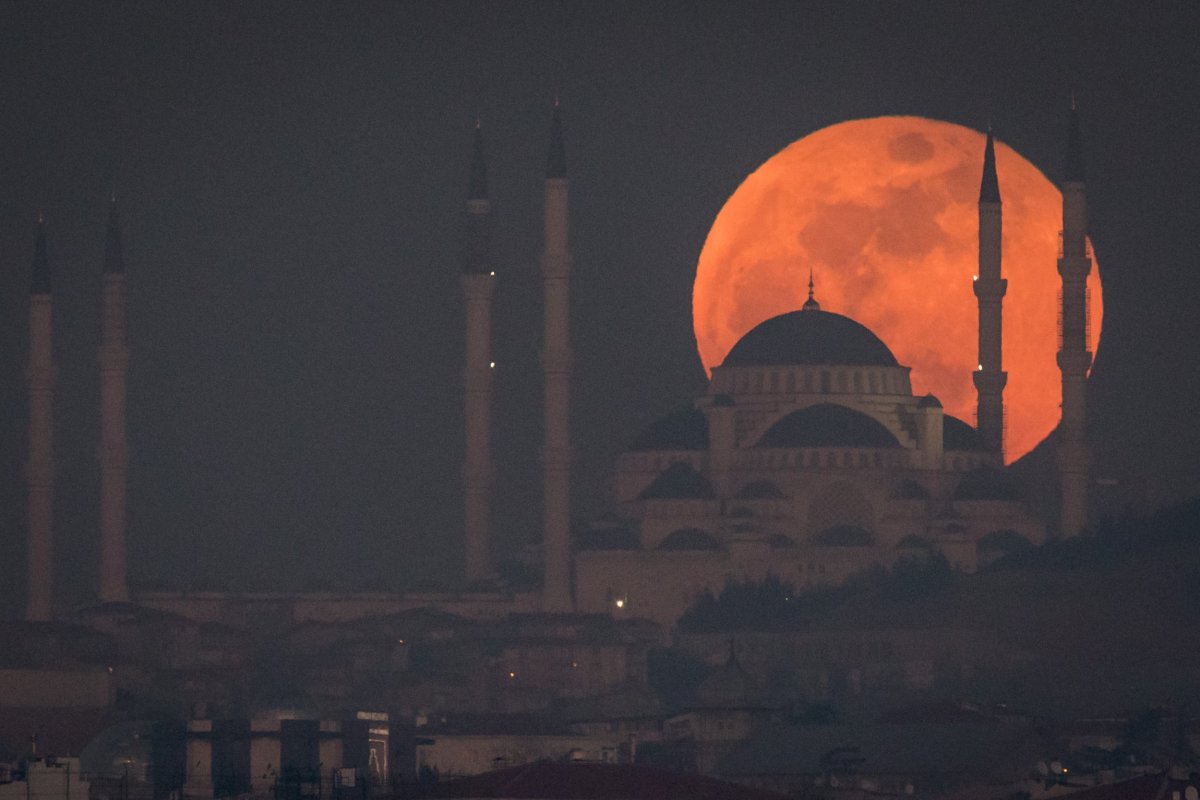A supermoon is set to coincide with a total lunar eclipse in January—and the rare event will be visible across the U.S.
This is the only total lunar eclipse—also known as a blood moon—of 2019. The last one was on July 27 of this year, and there won't be another until 2021.
Total lunar eclipses are when the Earth is directly between the Sun and the Moon. This means the Moon is lying in the shadow of Earth. "During a total lunar eclipse, the Moon usually turns a deep, dark red because it is illuminated by light that has passed through the Earth's atmosphere and has been bent back towards the Moon by refraction," the U.K.'s Royal Museums Greenwich explains. "Dust in the atmosphere blocks out the higher frequency blue light waves, but the longer wavelength of red light comes through."
The total lunar eclipse, which takes place in the early hours of January 21, is special as it will also be a "supermoon"—a phenomenon where a full moon coincides with its closest approach to Earth, known as the perigee. This makes the Moon appear bigger than normal.
These two events mean stargazers in January will see a "super blood moon." There was another super blood moon in January 2018. In an interview with Time in July, NASA planetary scientist Rick Elphic said it was unusual to have a total solar eclipse and supermoon fall so closely together: "It's usually years between lunar eclipses that have supermoons in them," he told the magazine. "We just happen to be in a seasonal cycle where last year there was one and then this year, there is one and I don't think there will be another supermoon eclipse for a while."

According to timeanddate.com, the total lunar eclipse will be visible from North and South America and western parts of Europe and Africa.
Elphic said the best way to see the eclipse is through binoculars: "Telescopes can be useful but overpowering; if you're using a telescope, you get a close-up view of the moon, but it's really a much more dramatic thing to see against the night sky with binoculars. That's your best bet."
January's full moon is also known as the Full Wolf Moon, according to The Old Farmer's Alama. This name as given by Native American and early Colonials as wolves would howl outside villages at night from hunger.
January will be the first of three supermoons. The next two will take place on February 19 and March 21, with February's being the largest and closest of the trio.
This article has been updated to include more details of the time and date of the total lunar eclipse.
Uncommon Knowledge
Newsweek is committed to challenging conventional wisdom and finding connections in the search for common ground.
Newsweek is committed to challenging conventional wisdom and finding connections in the search for common ground.
About the writer
Hannah Osborne is Nesweek's Science Editor, based in London, UK. Hannah joined Newsweek in 2017 from IBTimes UK. She is ... Read more
To read how Newsweek uses AI as a newsroom tool, Click here.








